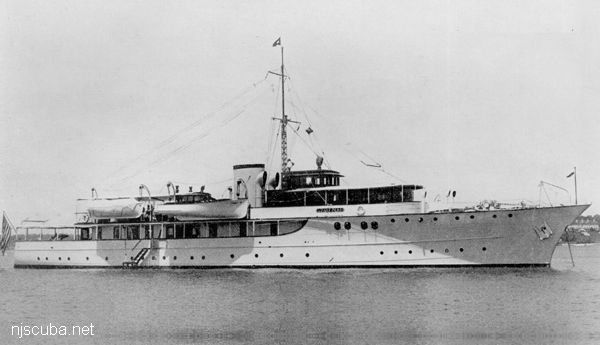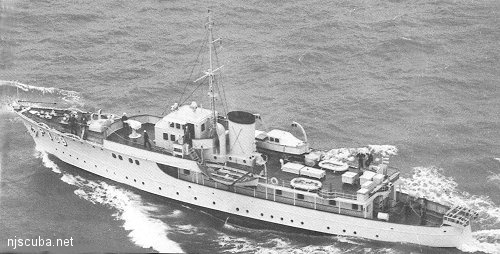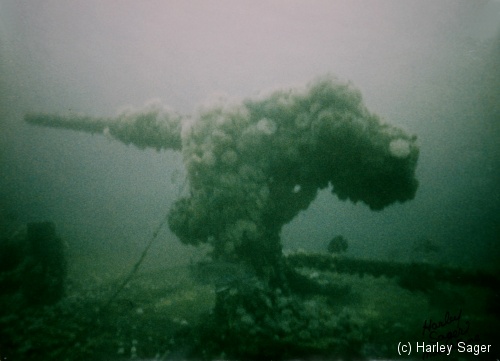USS Moonstone PYc-9

- Type:
- shipwreck, patrol boat, U.S. Navy (converted yacht)
- Built:
- 1929, Germany, as Lone Star
- Specs:
- ( 171 x 26 ft ) 469 gross tons, 47 crew
- Sunk:
- Friday October 15, 1943
collision with destroyer USS Greer ( 1090 tons) - no casualties - Depth:
- 130 ft

USS Moonstone (PYc-9) was a coastal patrol yacht in the service of the United States Navy. She was built in 1929 as Nancy Baker by Germaniawerft in Kiel, Germany, later renamed Mona, and subsequently acquired by the Navy as the Lone Star on 10 February 1941. Renamed Moonstone and designated PYc-9, she was converted for U.S. Navy service in Jacksonville, Florida, and commissioned on 10 April 1941. She was named for the gemstone moonstone.
On 2 May 1941 Moonstone sailed for patrol duty with the Panamanian Sea Frontier. She later moved to Ecuador on 2 January 1943 to aid in training the Ecuadorian Navy. In March 1943 she sailed to Charleston, South Carolina, to prepare for permanent transfer to Ecuador. On her return at Balboa, Panama, in July 1943, cracks were discovered in the cylinder blocks of her engine, and she was sent north for repairs. On 16 October 1943, off the mouth of Delaware′s Indian River, she collided with the destroyer USS Greer (DD-145) and sank immediately. All but one of Moonstones′s complement survived. She was struck from the Naval Register on 26 October 1943.
Today the Moonstone lies in 130 ft on a sandy bottom, intact and upright. The gaping hole in her port side gives clear evidence of the collision, and the engine room can be accessed by entering the impact site. Caution is advised because of loose debris, and wire cable in which to get entangled is everywhere. Her stern still has depth charges lined up in racks. The midsection superstructure has fallen into the compartments below. Her deck in some places rises almost 35 ft off the sand. The 3-inch deck gun still stands on her bow, just behind a hatch that leads to the crew's quarters. Her safe was recovered in 1985 and with it some jewelry, coins, and wartime artifacts. Visibility is best just before the end of an incoming tide.




Questions or Inquiries?
Just want to say Hello? Sign the .